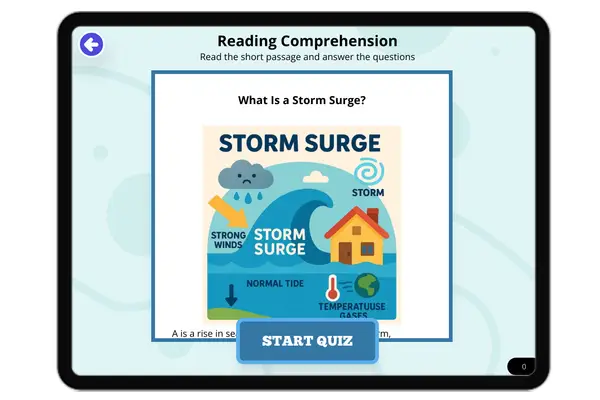Talus Slopes: Formation and Features — Reading Comprehension
Grades
- 5
- 6
- 7
- 8
Standards
- MS-ESS2-1
- MS-ESS2-2
- RST.6-8.4
PRINT+DIGITAL RESOURCE
This learning resource is available in interactive and printable formats. The interactive worksheet can be played online and assigned to students. The Printable PDF version can be downloaded and printed for completion by hand.
About This Reader
This earth science passage explains talus slope formation through mechanical weathering processes, aligning with NGSS MS-ESS2-1 (rock transformations) and MS-ESS2-2 (surface processes). It describes freeze-thaw cycles, gravity-driven rockfall, and characteristic 30-40° slopes with angular fragments. Real-world examples include Grand Teton National Park and planetary geology on Mars. The text meets CCSS.ELA-LITERACY.RST.6-8.4 for technical vocabulary like 'mechanical weathering' and supports curriculum standards about erosion hazards and mountain evolution.
Perfect For:
👩🏫 Teachers
- • Reading comprehension practice
- • Auto-graded assessments
- • Literacy skill development
👨👩👧👦 Parents
- • Reading practice at home
- • Comprehension improvement
- • Educational reading time
🏠 Homeschoolers
- • Reading curriculum support
- • Independent reading practice
- • Progress monitoring
Reading Features:
📖
Reading Passage
Engaging fiction or nonfiction text
❓
Comprehension Quiz
Auto-graded questions
📊
Instant Feedback
Immediate results and scoring
📄
Printable Version
Download for offline reading
🔊
Read Aloud
Voice-over with word highlighting













